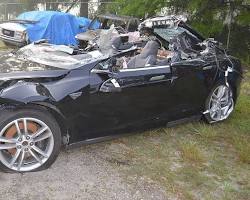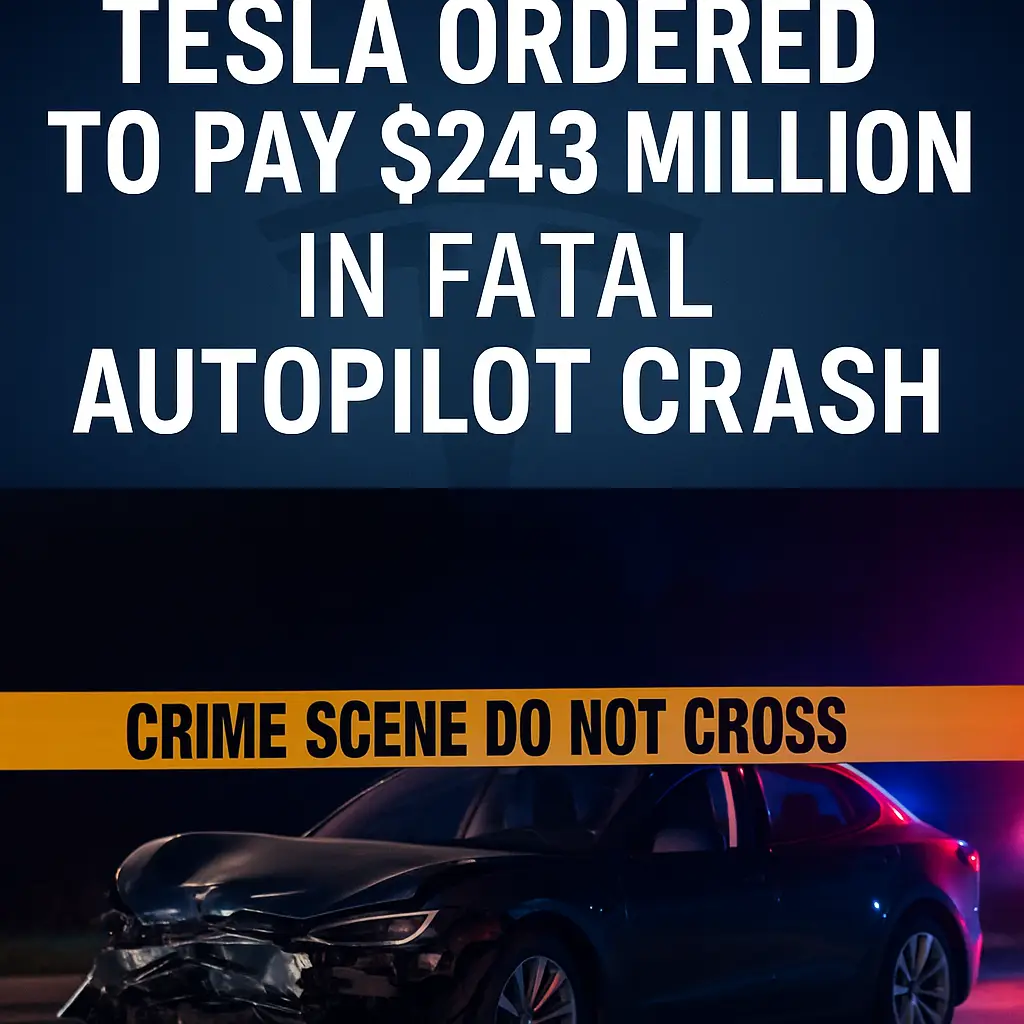In a landmark legal ruling with global tech implications, a Florida jury has ordered Tesla to pay $243 million in damages after a tragic 2019 crash involving its Autopilot feature.
This isn’t just a court verdict — it’s a wake-up call for the entire self-driving industry.
🛑 What Happened in 2019?

In Key Largo, Florida, 57-year-old George Brian McGee was driving a Tesla Model S with Autopilot enabled. The vehicle failed to stop at a T-intersection, sped through a stop sign at 60+ mph, and collided with a parked SUV.
As a result:
- Naibel Benavides Leon (22) died instantly.
- Dillon Angulo, her boyfriend, was critically injured.
The case eventually landed in court — and history was made.
⚖️ The Historic Verdict: Tesla Held Accountable
In July 2025, the jury concluded:
- Tesla was 33% liable for the crash.
- The driver (McGee) bore 67% responsibility (he settled out of court).
Total awarded:
- $129 million in compensatory damages
- $200 million in punitive damages
- Total: $243 million (Tesla pays full amount under Florida law)
This is one of the largest verdicts ever tied to self-driving technology.
🧠 Tesla’s Defense: Driver Error or System Flaw?
Tesla argued that Autopilot is not a full self-driving system, and drivers must always remain alert. Evidence showed McGee’s hands were off the wheel for 30+ minutes before the crash.
However, the jury was swayed by Tesla’s marketing and public messaging — including Elon Musk’s public comments — which seemed to exaggerate the vehicle’s autonomous capabilities.
💥 Overpromising Autonomy? What the Jury Heard
Key evidence included:
- Promotional videos describing Tesla as “self-driving”
- The names “Autopilot” and “Full Self-Driving” misleading customers
- Internal Tesla memos acknowledging system limitations
The jury concluded Tesla may have created a false sense of safety — and people paid the price.
📉 Fallout: Legal, Financial, and Reputational Shockwaves
After the verdict, Tesla faced:
- Stock drop of nearly 2%
- Potential new lawsuits citing this verdict
- Regulatory scrutiny over FSD marketing (especially in California)
This case is expected to influence how AI-powered driving tools are regulated in the U.S. and globally.
📌 Lessons: The Future of AI Behind the Wheel
This verdict sparks important questions:
- Can we trust semi-autonomous tech with human lives?
- Should companies be punished for marketing more than their products can deliver?
- Will this reshape how we regulate and trust AI in transportation?
The message is clear: Accountability matters — especially when AI drives.
🧾 Tesla’s Breakdown in the Case
| Category | Amount |
|---|---|
| Compensatory Damages | $129 million |
| Tesla’s Liability (33%) | $43 million |
| Punitive Damages | $200 million |
| Total Verdict | $243 million |
🚦 Final Thought: Will Tesla Learn, or Just Appeal?
Tesla has stated it will appeal the decision, but the damage to public trust is already done.
Whether you’re a driver, regulator, or tech enthusiast — this case is a reminder that bold innovation must come with bold responsible.


Leave a Reply